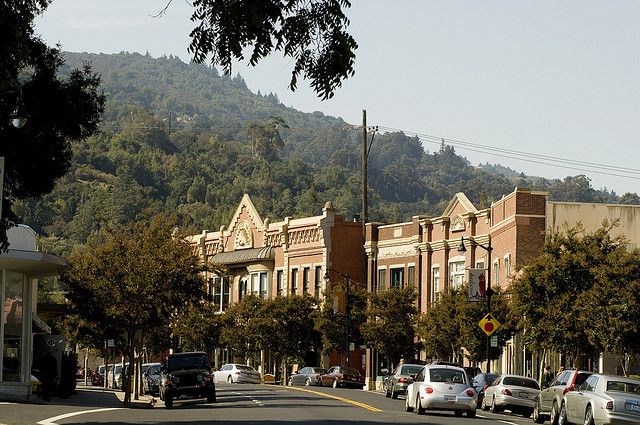Los Gatos is an incorporated town in Santa Clara County, California, United States. Take a look below for 15 fascinating and awesome facts about Los Gatos, California, United States.
1. The population is 33,529 according to the 2020 census.
2. It is located in the San Francisco Bay Area just southwest of San Jose in the foothills of the Santa Cruz Mountains.
3. Los Gatos is part of Silicon Valley, with several high technology companies maintaining a presence there. Notably, Netflix, the streaming service and content creator, is headquartered in Los Gatos and has developed a large presence in the area.
4. Los Gatos is Spanish for “The Cats”. The name derives from the 1839 Alta California land-grant that encompassed the area, which was called La Rinconada de Los Gatos (“The Corner of the Cats”), where the cats refers to the cougars (mountain lions) and bobcats that are indigenous to the foothills in which the town is located.
5. The town’s founding dates to the mid-1850s with the building of a flour-milling operation, Forbes Mill, by James Alexander Forbes along Los Gatos Creek. The mill’s two-story stone storage annex has been preserved as a museum just off of Main Street.
6. The settlement that was established in the 1860s was originally named for the mill, but the name was changed to Los Gatos after the Spanish land grant. The town was incorporated in 1887 and remained an important town for the logging industry in the Santa Cruz Mountains until the end of the 19th century.
7. In the early 20th century, the town became a thriving agricultural town with apricots, grapes and prunes being grown in the area. By the 1920s, the Los Gatos area had a local reputation as an arts colony, attracting painters, musicians, writers, actors and their bohemian associates as residents over the years. The violinist Yehudi Menuhin lived there as a boy; the actresses Joan Fontaine and Olivia de Havilland (sisters) were graduates of Los Gatos High School; John Steinbeck wrote The Grapes of Wrath there (the location is now located in Monte Sereno); and Beat hero Neal Cassady lived there in the 1950s.
8. Along with much of the Santa Clara Valley, Los Gatos became a suburban community for San Jose beginning in the 1950s, and the town was mostly built-out by the 1980s.
9. Downtown Los Gatos has retained and restored many of its Victorian-era homes and commercial buildings. Other notable buildings are the Forbes Mill annex, dating to 1880 and now housing a history museum; Los Gatos High School, which dates from the 1920s; and the Old Town Shopping Center, formerly the University Avenue School (the school was established in 1882; the current buildings date to 1923).
10. A number of brick buildings in downtown Los Gatos were destroyed or seriously damaged in the 1989 Loma Prieta earthquake, though the district was quickly rebuilt and has made a full recovery.
11. Rail transport played a large role in Los Gatos’s historical development, but the city, as of 2020, has no regular passenger train service of any sort. The South Pacific Coast Railroad, a popular narrow-gauge line from Alameda (and San Francisco via ferry) to Santa Cruz in the late 19th century, stopped in Los Gatos. Southern Pacific took over this line in 1887. Los Gatos was also near the Southern Pacific resort town of Holy City, along the rail line in the Santa Cruz Mountains.
12. The last Southern Pacific passenger train to Santa Cruz left Los Gatos in March 1940. In town, the rail line used to run along the shore of Vasona Reservoir to the present-day location of the Post Office, following the path of what is now a continuous string of parking lots between Santa Cruz Ave. and University Ave. There was also a streetcar-type rail line with service to Saratoga and San Jose. Streetcar service via the Peninsular Railway started about 1905 and ended about 1933. San Francisco commuter trains continued into downtown until 1959, and Vasona Junction until 1964. The site of the old railroad station is now occupied by Town Plaza and the post office.
13. While VTA had originally planned to extend their Green Line to Vasona Junction and bring back passenger rail to the city, the extension was cut short to Winchester due to the high cost of the extension, minimal expected ridership gains, and the difficulty of sharing rail right-of-way to Vasona Junction with Union Pacific freight trains.
14. Between 1891 and 1929, about 20 oil wells were drilled in and around Los Gatos, starting a minor oil-drilling boom. About 1861, small amounts of oil were discovered in streams, springs, and water wells in the Santa Cruz Mountains in the vicinity of Moody Gulch, about 6.5 kilometers (4.0 mi) south of the Los Gatos Post Office. An intense search for oil ensued, resulting in the drilling of many wells and establishment of the Moody Gulch oil field.
15. The Moody Gulch oil field, however, never met expectations, and it was abandoned sometime around 1938 after producing a total of about 98,000 barrels (15,600 m3) of oil and 44 million cu ft (1.2 million m3) of gas. In 1891, one of the Moody Gulch drillers, R.C. McPherson, found oil in a well along San Jose Road (now Los Gatos Boulevard) in the Santa Clara Valley flatlands, about 3 kilometers (1.9 mi) northeast of the Los Gatos Post Office. Although commercial production was never established, small amounts of oil were produced for use as fuel, lubricant, and road tar by local residents.




